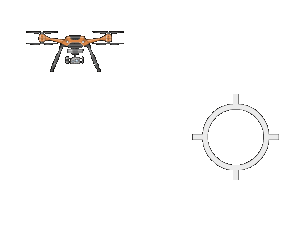Electronic Warfare (EW) refers to the use of electromagnetic waves to jam or manipulate hostile forces’ transmissions. This type of warfare disrupts communication networks between ground or air forces, prevent the transmission of information in the field, damage radar activity, and more. EW is an essential tool in modern warfare that can create a significant advantage for military forces and homeland security (HLS) agencies. The advantage is achieved by disrupting or disabling the enemy’s electronic communication systems, intelligence gathering, and it helps protect human life.
This article will present three examples of how defence forces and HLS use electronic warfare systems for protection.
Drone Detection & Jamming Systems
The threat:
While drones can provide various of benefits, including conducting surveillance for military forces or delivering supplies to remote areas, they can also pose a threat when used maliciously or inappropriately.
The potential for drones to be used for terrorist activities is a major concern. Such activities could include dropping explosive devices on civilians and soldiers or gathering intelligence on forces in the field.
The Electronic Warfare Solution:
Drone detection and jamming systems are electronic devices designed to detect, identify and neutralize unauthorized drone activity in a given area. These systems protect military forces and compounds, critical infrastructure, public events, and other sensitive areas from potential drone threats.
Electronic warfare jamming drone systems use radio frequency (RF) technology to disrupt the communication between the drone and its operator. Disconnecting the drone’s communication will force it to land or return to its origin and prevent threatening the forces.
Improvised Explosive Device (IED) Jammers
The threat:
The threat of IEDs (Improvised Explosive Devices) is a significant concern in many world areas, particularly conflict zones and political instability.
IEDs are explosive devices constructed from various readily available materials. These materials often include wireless communication devices, such as remote controls, walkie talkies and explosives. IEDs pose a significant risk to civilian populations, soldiers and military convoys.
These devices are hidden or buried in the ground, making them difficult to identify and defend against. Terrorists and insurgent groups often use IEDs because they cause significant damage to vehicles and kill or injure people.
The Electronic Warfare Solution:
An IED jamming system is an electronic countermeasure designed to disrupt communication signals to explosive devices. These systems work by emitting powerful radio signals that interfere with the signals used by the terrorist to detonate the IEDs, preventing the explosive device from being triggered.
IED jamming systems are an essential tool for mitigating the threat of IEDs. Military and law enforcement organizations use IED protection devices to protect their personnel and equipment from IED attacks. These devices can be mounted on vehicles or used as portable devices. These systems can help save lives and protect areas where the risk of IED attacks is high. They do this by disrupting the electronic signals used to trigger explosive devices.
Cellular Communication Jamming Systems
The threat:
Cellular phones pose a significant security threat especially in prison facilities. When we examine the threat in the prisons, if inmates have access to cell phones, they can use them to communicate with people outside, coordinate criminal activity, and even order hits on other inmates or prison staff. Prisoners can use phones to correspond with people outside, who can smuggle drugs, weapons, or other contraband into the prison facility.
The Electronic Warfare Solution:
To combat the threat of cellular communication in prison facilities, fixed cellular and Wi-Fi jammers are installed in several areas of the prison. Installation of the jammers at designated areas allows control and disables the inmates’ unauthorized communication. The ability to choose which compound to block and when allows, for example, to jam the cellular communication in the area where the prisoners stay but not the command area of the prison warden.
Electronic Warfare plays an essential role in modern security and military operations, allowing forces to gain a tactical advantage by disrupting the enemy’s electronic capabilities. The EW systems protect soldiers, systems and facilities against communication threats, using advanced technology for every scenario.




